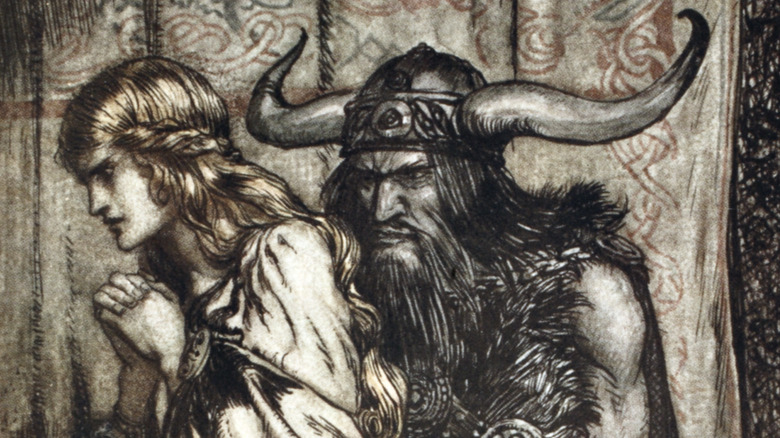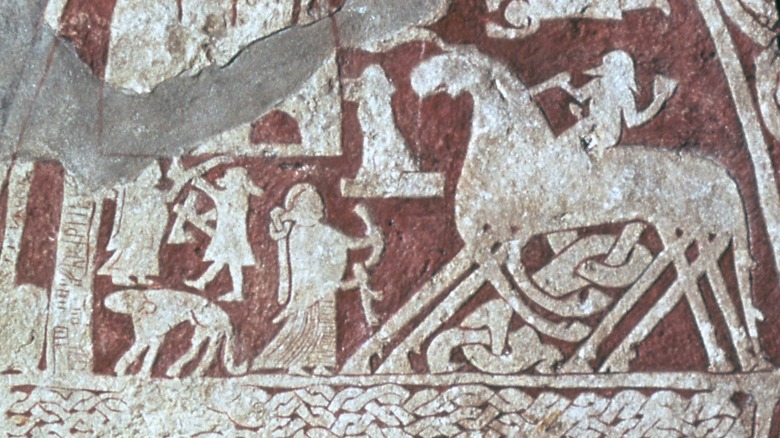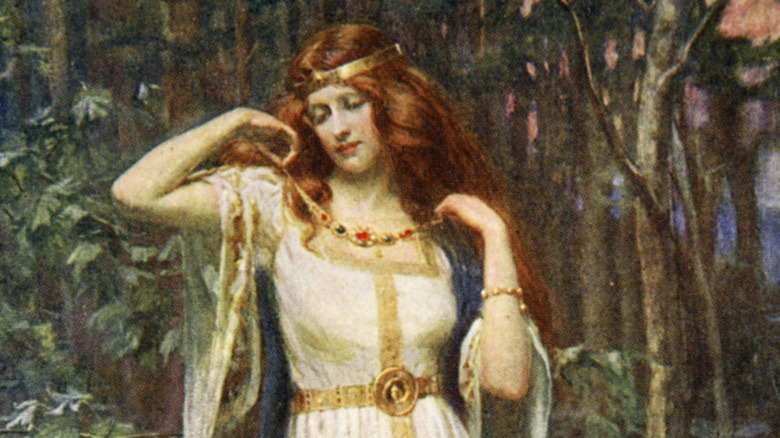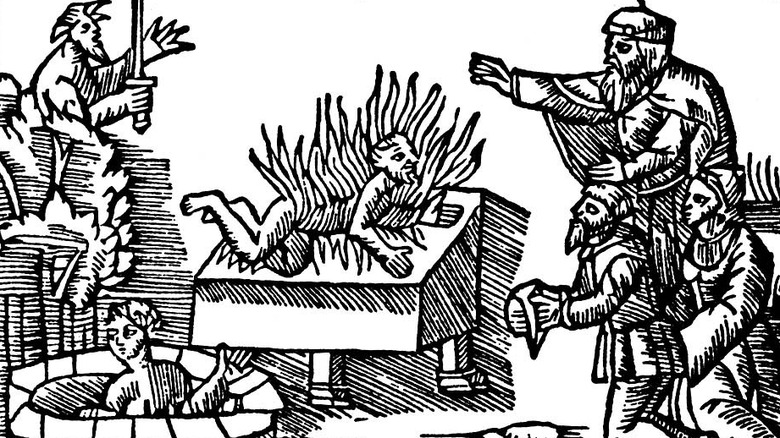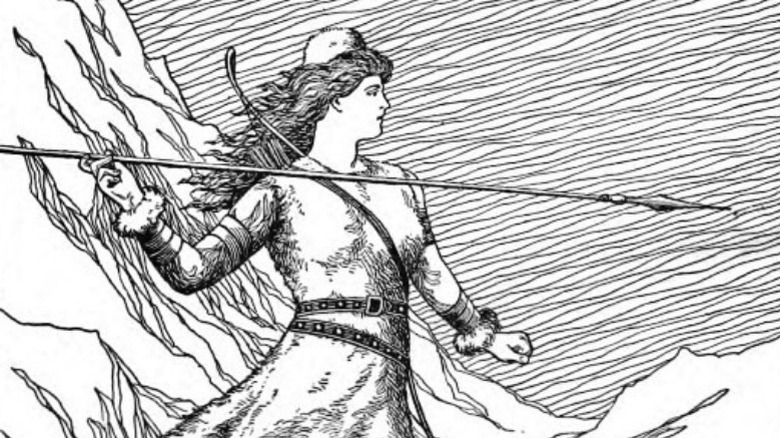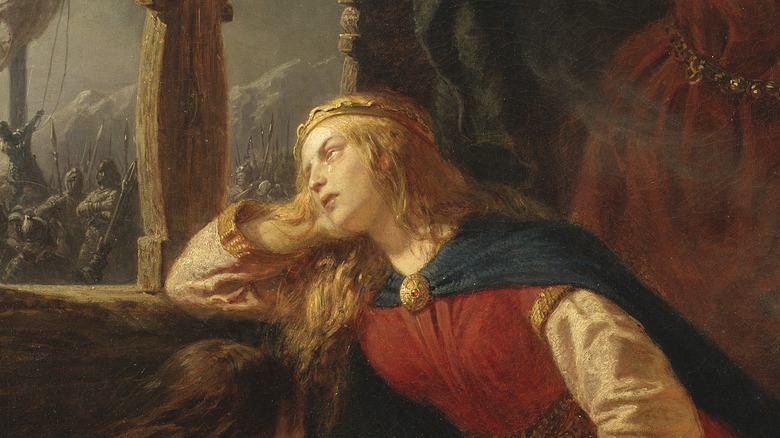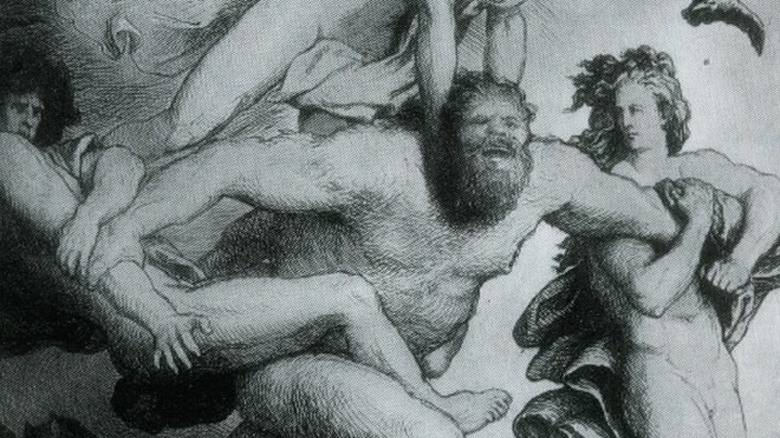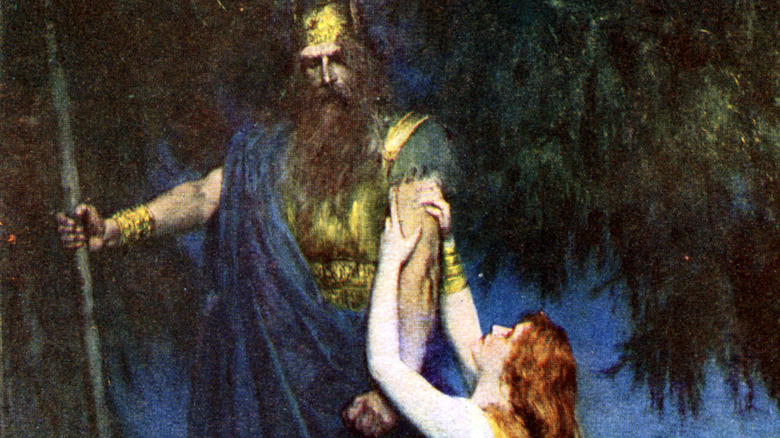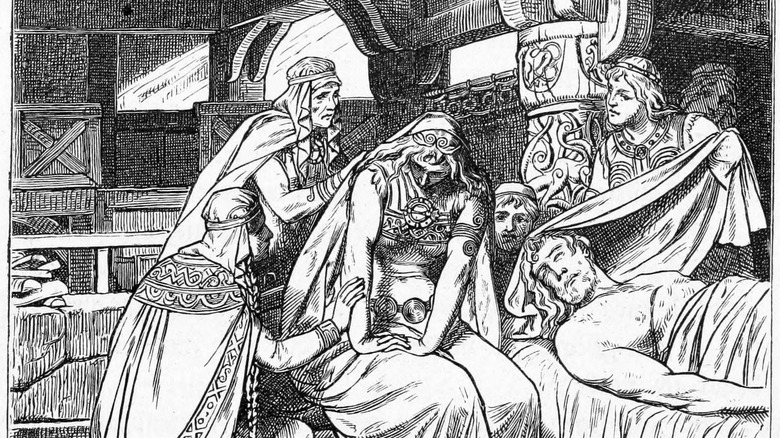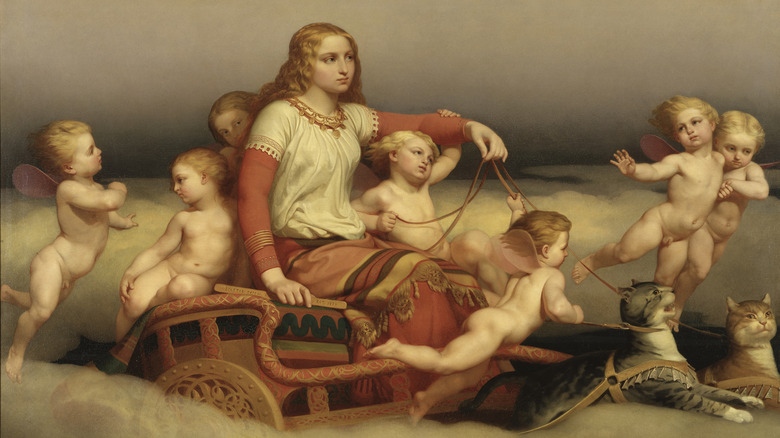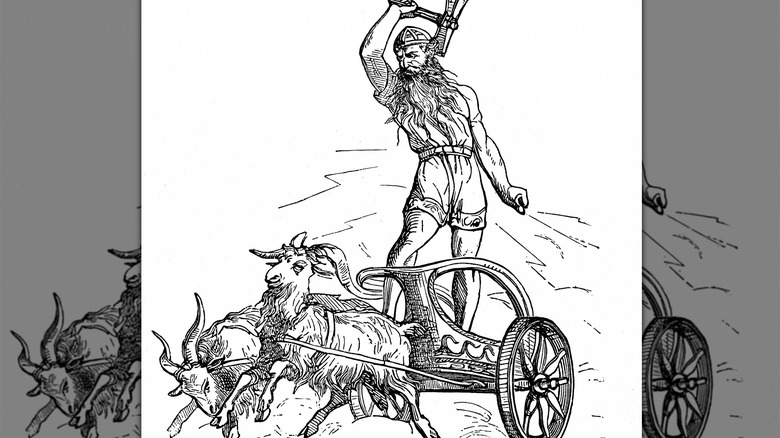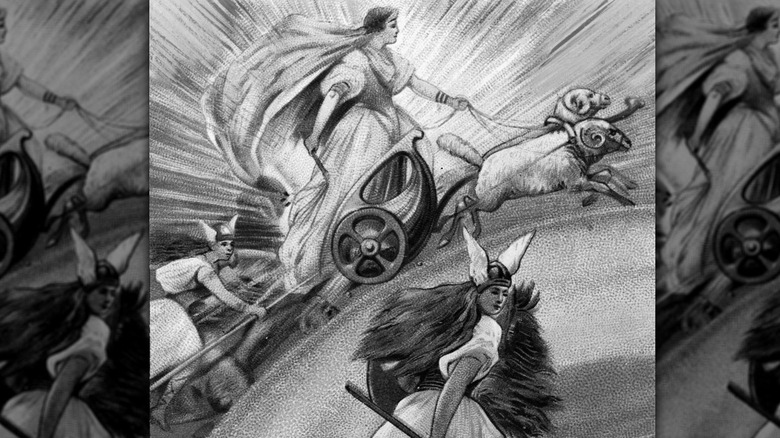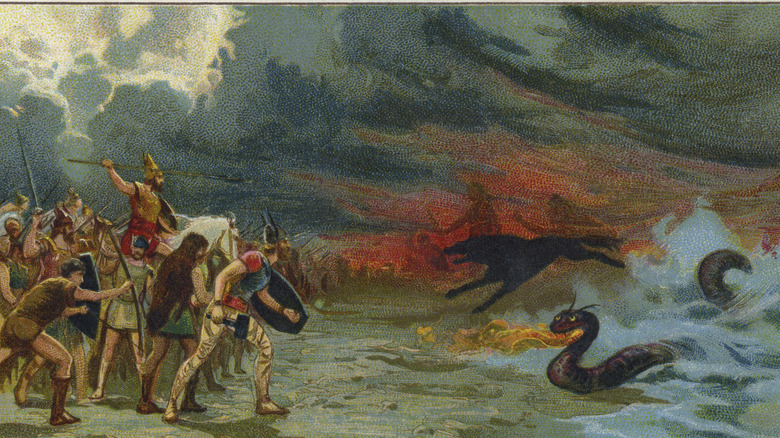Stories From Norse Mythology They Couldn't Teach You In School
Norse mythology is full of magic and monsters, but it is also full of characters who push the boundaries of society and exist outside of the rules and traditions of humanity. Some can literally shape-shift, transforming their own bodies to seduce or deceive. In some stories, gods and heroes are highly promiscuous, and engage in sexual taboos that were just as controversial when the stories were written as they are today. In others, characters go to gruesome lengths for vengeance. Many of the old legends include stories of sexual violence, murder, incest, and cannibalism.
Norse mythology has intrigued, shocked, and fascinated people for thousands of years. The majority of the best-known stories were written down as eddas and sagas by the Icelandic historian Snorri Sturluson in the Middle Ages, but it is believed that the characters, stories, and rituals described there are far older, likely originating before the 5th century. Norse gods like Odin, Thor, and Loki remain well-known figures in modern culture and are still enjoyed by adults and children alike – but many of the lesser-known stories from Norse mythology are far more disturbing than the kind of bedtime stories children are usually told today.
The following article includes descriptions of sexual assault.
Loki seduced a horse
The gods of Asgard were often at war, and they needed a wall to surround Asgard and keep invaders out. They were approached by a mysterious builder with a strange offer: The builder would try to build the wall in just a few short months, but if he succeeded, the gods had to give him the sun and the moon — and Freyja, the goddess of love and death, had to marry him. Loki the trickster convinced the other gods to agree, believing that there was no way the builder could win such a challenge. What Loki didn't know was that the builder had a magic horse.
The builder's stallion was enormous, and it was able to easily haul stones for the wall. Soon, it became obvious that the builder was going to make the deadline, and the gods would have to pay him after all. The furious gods threatened to kill Loki if they lost the wager. As a last resort, the trickster god used his magic to transform into a beautiful mare and lured the stallion away. Without his horse, the builder couldn't finish the wall, and the gods won their bargain.
Freyja did not have to marry the builder, but Loki did have to mate with the horse. Afterward, Loki vanished for several months. When he returned, he brought back an eight-legged foal, which he had given birth to himself.
Freyja probably had sex with her brother
One of the strangest sources of stories about the Norse gods is "Lokasenna," which is a long poem recounting an incident where Loki is kicked out of a party the gods are holding. He sneaks back in and proceeds to trade humorous insults with all of them, like an impromptu roast. Many of Loki's accusations against the other gods are surprising, but what he says to Freyja, goddess of love and death, is the most shocking.
Loki tells the entire party about a time in which several of the other gods caught Freyja in the act of having sex with her own brother, Freyr. He also claims that they caught her farting. It would seem like Loki is lying or joking, considering how outrageous these accusations are, but none of the other gods, including Freyja and Freyr, deny that it's true. Only their father, the sea god Njorth, responds at all. Rather than deny that his children are in an incestuous relationship, he defends his daughter's right to have sex with anyone she wants, whether she is married or not.
Eating your family grants magic powers
Cannibalism is often considered the ultimate taboo, but in some myths it is depicted as a way of becoming wiser, healthier, or more powerful. As described by Medieval food and magic scholar Andrea Maraschi for Medievalists, some Norse tales describe how when somebody ate another person's flesh, they would acquire specific virtues from them. In one Icelandic saga, an earl is jealous of the magical abilities of a rival soothsayer, so he kills him and eats his heart to steal his power. In many accounts, though, people aren't eating their rivals – they're eating their family.
As described in Katherine Marie Olley's study in the Journal of English and Germanic Philology, many Norse myths depict a person eating relatives. In some, like the story of Loki's wolf child Fenrir eating the god of justice's hand or the hero Sigurd eating his dragon uncle's heart, the cannibalism is diluted by the fact that some of the characters look like monsters and are already in conflict for other reasons. However, this is not always the case.
In one story, involving two human brothers, the cannibalism is actually consensual. A man called Elg-Frodi mistakes his brother for an intruder and the two briefly fight. After realizing his mistake, Elg-Frodi is disturbed by how easy it was to overpower his brother, and feeds him some of his own blood. After the gory ritual, Elg-Frodi's brother is significantly stronger for it.
Loki tied his genitals to a goat's beard
The giant Thjazi was a terrifying enemy of the gods – but not as terrifying as his daughter Skadi. As recorded in "Skáldskaparmal" from Snorri Sturluson's Prose Edda, the gods were able to kill Thjazi, but when his daughter put on his helmet and took up his weapons, the gods immediately called for a truce. They agreed to give her many things, including any of the gods for a husband and transforming her dead father's eyes into stars, but the hardest thing she demanded was a simple one: To avoid a war, they had to make Skadi laugh.
Skadi included this condition because, as she also happened to be grieving, she thought it would be impossible. Although the task seemed futile, Loki the trickster god figured out the one thing that would make the warrior giantess laugh: pain. He presented Skadi with a billy goat with a rope tied around its beard, then tied the other end around his testicles. Then, he startled the goat. As the goat ran, the rope became taut, yanking both the goat's beard and Loki's genitals painfully. Both Loki and the goat shrieked in pain as the animal attempted to break free. Loki finally collapsed in front of Skadi – but only when she was roaring with laughter.
Signy killed her sons and seduced her twin brother
Many of the Norse myths include murder and revenge, but few are as disturbing as the story of Princess Signy. As folklorist D.L. Ashliman describes in his English language summary of "The Saga of the Volsungs," the King of Hunland had eleven children, and the oldest were twins named Sigmund and Signy. King Siggeir of Gautland wanted Signy to be his wife, and while she despised Siggeir, her father forced her to marry him. Despite their union, the kingdoms of Gautland and Hunland were soon at war, and Siggeir killed Signy's father and all of her brothers except Signy's twin, Sigmund.
King Siggeir and Signy had two sons, and Signy attempted to train both to kill their father. To make them tougher, she regularly subjected the children to hideous tortures, like stitching their clothes to their body. When her sons failed her tests, Signy ordered her twin brother Sigmund to kill them. She decided that the problem with her children was her husband and that if she wanted a strong son, she would have to find a stronger father.
Signy decided that the only man strong enough was her own twin, but knew that he would not willingly get her pregnant. So, she used magic to transform into the shape of another woman and seduced him, tricking him into incest. She had a son, and this one passed her cruel tests — the child would go on to burn King Siggeir's hall with both him and Signy inside.
The world is made of a dead giant
In Norse mythology, the first being that ever lived was the giant Ymir, and his body would eventually become the world — quite literally, and in gruesome fashion. According to legend, Ymir beget the giants from his armpit and leg and was fed by a supernatural cow, Audhumla, who also had her part in creation — she survived by licking salty rocks, and one of these stones, carved by her tongue, became the grandfather of Odin and his two brothers.
Odin and his brothers murdered Ymir, and the blood that flowed from his corpse became a massive flood, which drowned almost every other living being, before settling into lakes and rivers. Not stopping there, Odin used his grandfather's bones to build mountains, his body to make the earth, and his teeth to make rocks. The inside of Ymir's skull became the sky, and his brain, blown to pieces, became the clouds.
This gory corpse made a beautiful world, but soon maggots emerged from the rotting flesh. Odin granted these maggots wisdom, and they became the first dwarves.
Odin commits rape to fulfill a prophesy
One of the most influential events in Norse mythology is the murder of the god Baldr, who was Odin's son and beloved by all the gods — except for Loki. The first thing Odin did after his son's murder was to visit a seer to learn about the future. The seer assured Odin that Baldr would be avenged, but they also told him that the man who would do it was not born yet. However, the seer predicted that the mother of Baldr's avenger was a princess named Rind.
Immediately, Odin swore that he would get her pregnant with the son who would avenge Baldr's death. First, Odin transformed himself into a soldier in her father's army and tried to seduce her, but Rind was not interested. Odin tried again in different disguises, but every time Rind said no. Finally, he used ancient runes to make her seem like she was unwell, then took on the form of a woman healer who claimed to have a medicine that could cure her, but that Rind would have to be tied up to take it. When Odin was alone with Rind, he raped her.
As described in John Lindow's "Norse Mythology," this story was likely always seen as disgusting and shameful, particularly because Odin had disguised himself as a woman, and the use of magic by men was already considered unnatural. In some versions of the story, the other gods banished Odin for a decade for his crimes.
A king is tricked into eating his own sons
In "The Saga of the Volsungs," there is a widowed queen named Gudrun, who is betrothed to a king named Atli. Gudrun tried desperately to avoid the match because she had received a prophecy that the marriage would bring nothing but grief, but she was still forced to go through with it. They had two sons together, but soon she learned that she was right to try to refuse the marriage: King Atli was planning to betray her family and kill her brothers.
Atli set a trap, and when Gudrun's brothers arrived, her husband immediately had his men attack them. Gudrun was a warrior queen and fought bravely against her husband to save her brothers, but in the end, they were defeated. King Atli killed both of Gudrun's brothers, one by cutting out his heart and the other by throwing him into a snake pit. Afterward, Gudrun submitted to her husband, telling him that she would always be faithful to him because he had defeated her family in battle. But, unbeknownst to him, she was plotting a horrendous revenge.
That night, King Atli asked for a magnificent feast to celebrate defeating his wife's brothers, and Gudrun prepared the meal for him. He ate voraciously and was very pleased with the food – until Gudrun revealed that she had killed both of their children and served their hearts to their father. Soon after, she burned Atli's halls to the ground with him and all his men inside.
The Goddess of love's parents were siblings
Freyja, often depicted riding a pig or in a chariot pulled by cats, is among the most famous of the Norse gods. In addition to being the goddess of death and war, she is often linked to other love and fertility goddesses like the Egyptian Isis and the Greek Aphrodite, and some myths about these goddesses are very similar. However, the story of her birth is highly unusual. Unlike Isis, who was born from a union of the earth and the sky, or Aphrodite, who burst fully formed out of the ocean, Freyja is likely the product of incest.
Many of the gods in popular Norse myths, like Odin, Baldr, Thor, and Loki, are known as the warrior Aesir gods. As described in Snorri Sturluson's "Heimskringla," the Aesir gods considered incest a terrible taboo and never had relationships with their siblings. There was another group of gods, however, known as the Vanir gods, and the Vanir gods always had incestuous relationships. Freyja's father, the sea god Njorth, was also a Vanir, and was married to his own sister.
Thor keeps eating his pets
When the thunder god Thor traveled the Nine Realms fighting giants and trolls, he often got around using a chariot pulled by a pair of goats. He named his goats Gap-tooth and Tooth-grinder, and they pulled him everywhere he needed to go. However, when Thor got hungry he would turn on the animals, as described in "Glyfaginning." First, Thor would slit his goats' throats, then flay them, and finally boil their flesh into a stew. Overnight, Thor would wrap Gap-tooth and Tooth-grinder's bones up in their flayed skin, then in the morning, his goats would be alive again, ready to work.
Gap-tooth and Tooth-grinder are not the only animals that were killed, eaten, resurrected, and killed again in Norse mythology. As recounted in John Lindow's "Norse Mythology," in the afterlife dead warriors are fed nothing but pork, and all the meat comes from a single pig named Sæhrímnir. Each morning the pig is boiled into a stew, and then in the evening he returns to life, only to be eaten again the following day.
Odin's brothers had sex with his wife
According to legend, Odin brought humans to life while his brothers shaped their bodies and gave them reason. Compared to their more famous sibling, Odin's brothers Vé and Vili are not particularly important gods in the Norse myths that have survived. But while there are few other stories about Odin's brothers, there is one notable tale that is recounted in "Heimskringla" — both Vé and Vili had sex with Odin's wife.
Odin was known to roam the world, and while he was away, his brothers Vé and Vili ruled in his stead. On one occasion, however, he was gone so long that his fellow gods began to suspect that he was never coming back. Assuming he was dead or had abandoned his role as king of the gods, Vé and Vili began dividing up everything Odin owned between them. To top it all off, Odin's wife, Frigg, started having sex with both of her husband's brothers – at least until Odin returned to reclaim the throne, his things, and his wife.
One possible interpretation of why Vé and Vili felt so entitled to Odin's things, and why Frigg would so quickly start sleeping with them while her husband was away, is that they are not really Odin's brothers. Some academics note that Vé and Vili are hypostases of Odin, or all different forms of the same god.
Almost all the gods and heroes die horribly
In "Voluspo," Odin resurrects a dead woman and urges her to tell him the future. She tells him many things, but the most disturbing is the prophecy of Ragnarök, which means "fate of the gods," a story about the apocalypse.
During this crisis, the gods will have one final war against the giants, and almost all of them will die. Before the war, it will always be cold, people will become violent and turn on each other, the sun will vanish from the sky, and the freezing ocean will cover the land. Loki, of course, will be an enemy of the gods, bringing his army of giants to Asgard on a ship made of the fingernails of the dead.
Odin, the king of the gods, will be the first to die, eaten by Loki's terrifying wolf son Fenrir. Thor will fight another of Loki's monstrous children, Jörmungandr, a snake large enough to wrap around the whole world. Although Thor defeats Jörmungandr, he is also poisoned and dies on the battlefield. Heimdall, the watchman of Asgard, and Loki will kill each other in battle, and in the midst of this epic brawl, a fire starts and the entire world burns.
